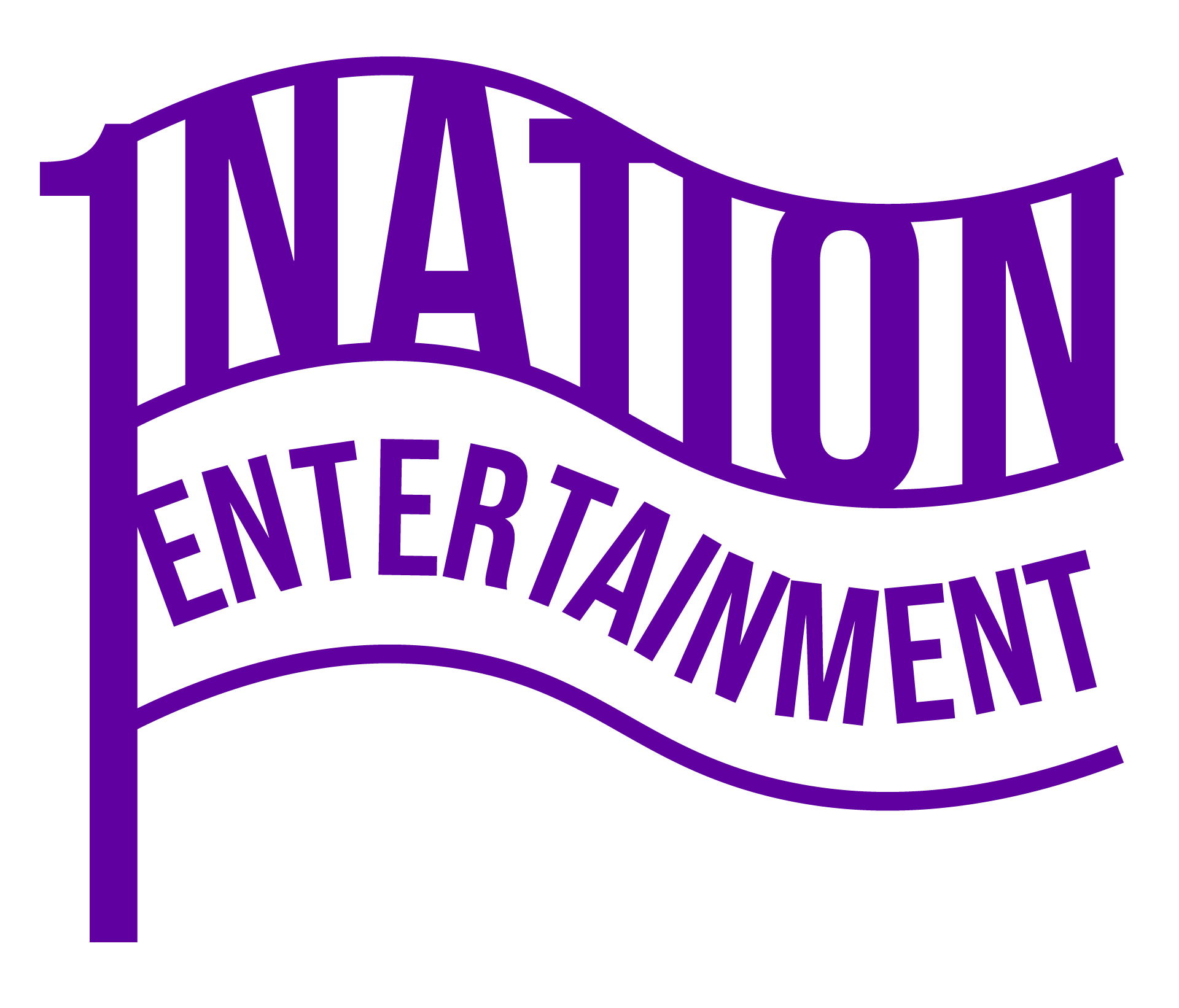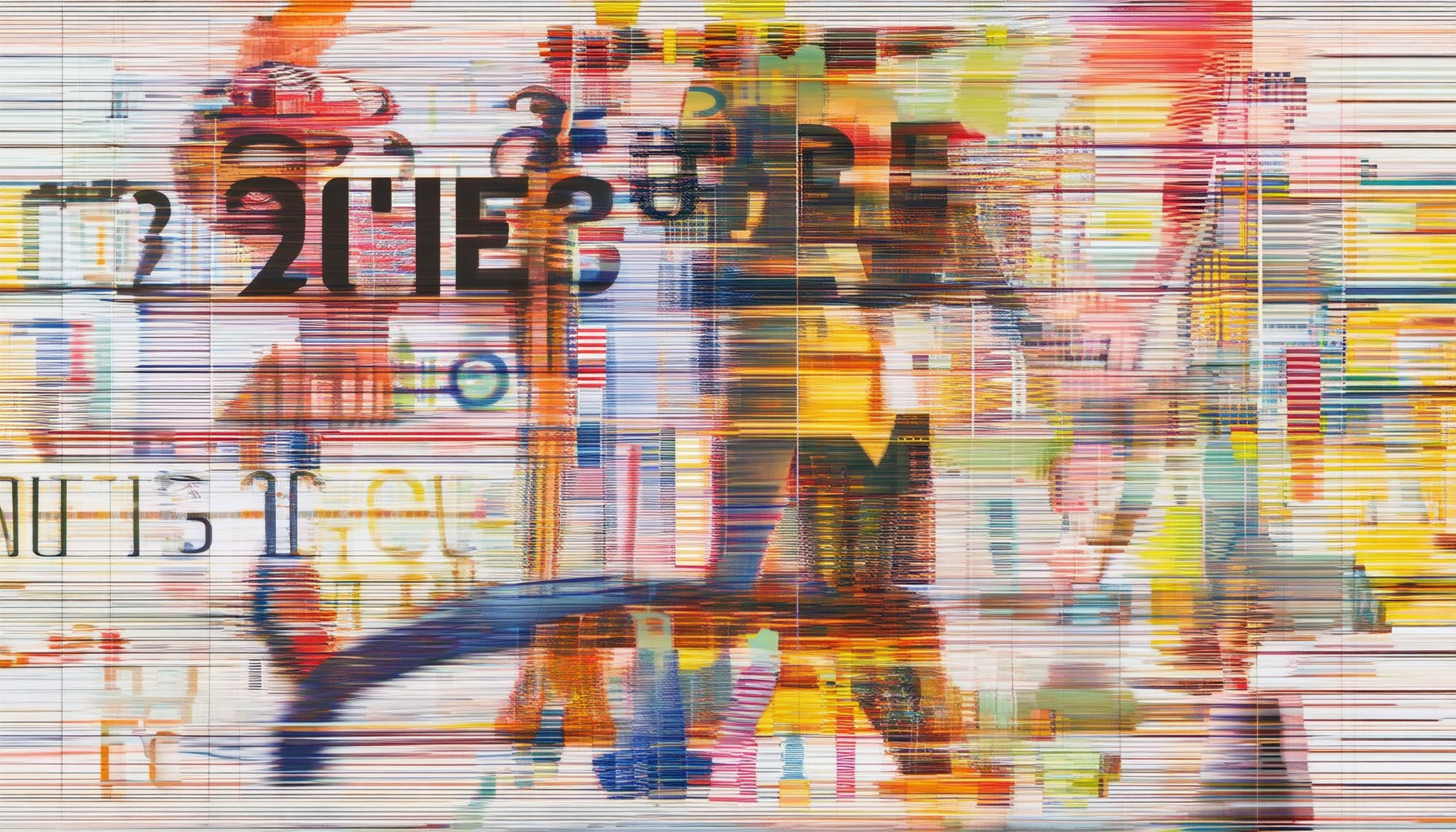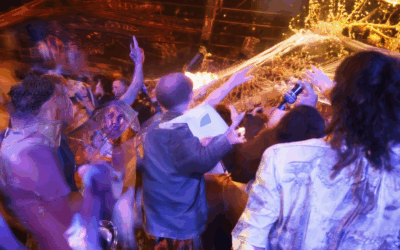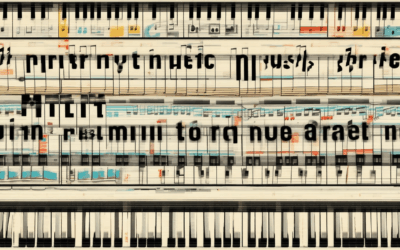Exploring the ever-evolving landscape of culture, staying informed about the latest trends is essential for anyone looking to navigate modern society. From shifts in societal norms to the rise of new movements, cultural trends continue to shape our world in profound ways. Whether you’re interested in understanding what’s trending right now, anticipating future cultural shifts, or discovering how these trends impact various aspects of life, this comprehensive guide offers valuable insights. Delve into the fascinating world of cultural trends, explore popular culture movements, and uncover expert perspectives on what lies ahead. By examining these dynamics, you’ll gain a deeper appreciation for the complexities of human behavior and the influence of cultural shifts on everyday life. This exploration will leave you well-prepared to engage with the changing tides of culture, whether you’re an enthusiast, a professional, or simply someone curious about the world around them.
Key Takeaways
– Popular Culture Categories: Explore six core areas shaping modern society—Entertainment, Sports, News/Media, Politics, Fashion, and Technology—each driving unique trends and global conversations.
– Top Global Cultures: Discover the cultural giants of 2025, including Italian, Japanese, Brazilian, Indian, and American cultures, known for their rich histories, innovative arts, and widespread global influence.
– Cultural Diversity Insights: Understand eight key cultural differences, from communication styles and work ethics to food preferences and art expression, essential for fostering empathy and bridging global gaps.

Current Cultural Trends
The cultural landscape is constantly evolving, driven by shifts in technology, societal values, and global interconnectedness. Here are some prominent trends shaping our world today:
- Technology Integration
- Augmented Reality (AR) and Virtual Reality (VR) – These technologies are revolutionizing industries from gaming and retail to education and travel. AR is transforming how consumers interact with products through virtual try-ons and immersive experiences, while VR is being adopted in educational settings for remote learning and in travel agencies for virtual tours.
- AI and Automation – Artificial intelligence is increasingly integrated into daily life, from personal assistants like Siri and Alexa to automated systems in manufacturing and logistics. This shift is reshaping productivity and job markets worldwide.
- Sustainability and Ethical Consumption
- Zero-Waste Products – Companies are developing packaging solutions that minimize environmental impact, with brands like Patagonia and Ecovera leading the charge in producing eco-friendly products.
- Circular Fashion – The second-hand clothing market is booming, supported by platforms like ThredUp and Poshmark that promote sustainable consumption patterns.
- Remote Work and Hybrid Models
- Flexible Work Arrangements – The pandemic accelerated the adoption of remote work, with many companies now offering hybrid models that combine in-office and remote work. Tools like Zoom and Notion have become essential for maintaining productivity and collaboration.
- Co-Working Spaces – Shared offices and Coworking spaces are still popular, providing a mix of social interaction and focus environments.
- Mental Health Awareness
- Open Conversations – There’s a growing normalization of discussing mental health in professional and social settings, with organizations investing in mental health programs and resources.
- Mental Health Apps – Applications like Calm and Headspace are empowering individuals to manage stress and anxiety through guided meditation and mental health resources.
What Are Popular Culture Trends?
Popular culture, often referred to as pop culture, encompasses the prevailing trends and practices in a society, reflecting the attitudes, values, and interests of the people. It includes a wide array of elements such as music, movies, fashion, technology, and social media. These trends evolve constantly, influenced by various factors like technological advancements, global events, and changing societal norms.
Major Components of Popular Culture
- Music : Music has always been a significant part of popular culture, shaping trends and influencing generations. From rock and roll to hip-hop, music serves as a reflection of societal changes and individual expressions of identity.
- Movies and Television : Films and TV shows often drive cultural trends, introducing new concepts, characters, and storylines that resonate with audiences worldwide. Streaming platforms have further amplified this impact, making content more accessible and influential.
- Fashion : Fashion trends come and go, often dictated by celebrities, influencers, and designers. Streetwear, luxury brands, and sustainable fashion are among the most prominent trends shaping contemporary style.
- Technology : The rise of digital platforms like social media, smartphones, and virtual reality has redefined how people interact and consume content, creating new forms of cultural expression.
- Social Media and Cyberculture : Social media platforms have become integral to popular culture, influencing everything from communication styles to viral trends. Memes, hashtags, and online communities shape how cultures evolve in the digital age.
- Art and Literature : Artists and writers continue to push boundaries, exploring themes that reflect the complexities of human existence. Their works often serve as mirrors to the cultural shifts taking place around them.
Current Trends in Popular Culture
- Globalization of Trends : Cultural trends are increasingly global, with ideas spreading rapidly through digital platforms. This interconnectedness has led to a blending of styles and influences from diverse backgrounds.
- Sustainability in Fashion : There is a growing emphasis on eco-friendly practices and ethical production methods in the fashion industry. Consumers are becoming more conscious about the environmental impact of their purchases.
- The Rise of K-Pop : Korean pop culture, particularly K-pop, has gained significant popularity worldwide. Groups like BTS have transcended cultural boundaries, amassing a global fanbase and influencing trends in music, fashion, and even politics.
- NFTs and Digital Art : Non-fungible tokens (NFTs) have become a cultural phenomenon, with digital art sales reaching unprecedented levels. This trend has extended to other industries, influencing how art is created, owned, and traded.
- Cultural Appropriation Debates : Discussions around cultural appropriation have intensified, prompting greater scrutiny of how styles and traditions are adopted and adapted across different contexts.
- The Return of Retro Styles : There is a resurgence of interest in retro fashion, music, and design. Vintage-inspired looks and nostalgia-driven trends are becoming increasingly popular among younger audiences.
The Impact of Popular Culture
Popular culture not only reflects societal values but also shapes them. It provides a lens through which people understand their world, influencing everything from personal identities to societal norms. As technology continues to advance, the role of popular culture in shaping trends will likely grow even more significant.
By staying attuned to these trends, individuals can better navigate the ever-evolving landscape of our connected world. Whether through music, movies, or social media, popular culture remains a dynamic force that influences and reflects the way we live.

What Cultural Trends Will Shape 2025?
As we approach 2025, the world is bracing itself for a wave of cultural shifts that will redefine how we live, work, and interact. These trends are not just evolutionary but revolutionary, driven by a confluence of technological advancements, societal changes, and global interconnectedness.
-
1. Rise of Sustainability-Centric Culture
The push for environmental consciousness will continue to dominate cultural discourse. From renewable energy advocacy to zero-waste initiatives, 2025 will see a stronger emphasis on sustainable living. Major movements around climate action and eco-conscious consumerism will gain momentum, influencing everything from fashion to food production.
-
2. Acceleration of Technological Integration
Technology will play a pivotal role in reshaping cultural norms. Virtual reality, augmented reality, and artificial intelligence will become more mainstream, altering how we experience art, education, and social interactions. This integration will lead to a blending of physical and digital worlds, creating new forms of storytelling and communication.
-
3. Globalization vs. Localization Tension
2025 will witness a nuanced balance between global connectivity and local identity. As the world becomes more interconnected, there will be a counter-movement toward preserving unique cultural heritage. This duality will manifest in everything from international collaborations to the resurgence of traditional crafts and languages.
-
4. Mental Health Awareness and Wellness Culture
Mental health will take center stage as a cultural imperative. The conversation around stress management, mindfulness, and holistic health will expand, leading to a more inclusive approach to wellness. Companies and communities will increasingly prioritize mental well-being, fostering environments that support emotional and psychological growth.
-
5. The Resurgence of Traditional Arts
Amidst the digital age, traditional arts such as calligraphy, pottery, and tapestry will experience a renaissance. There will be a growing appreciation for craftsmanship and hand-made goods, as consumers seek authenticity and connection in an increasingly virtual world.
-
6. The Fusion of Art and Technology
2025 will see the convergence of art and technology in unprecedented ways. Digital art collectives, NFTs, and interactive installations will redefine the art market. Artists will explore new frontiers, combining traditional mediums with cutting-edge innovations to create immersive experiences that challenge conventional notions of art.
These cultural trends will not only shape our collective consciousness but also drive innovation across industries. As we look ahead, the intersection of tradition and modernity will be the hallmark of 2025’s cultural landscape, offering both challenges and opportunities for growth and evolution.

What Are the 6 Categories of Popular Culture?
Popular culture encompasses a wide array of elements that shape societal norms, values, and interests. Here are the primary categories:
- Entertainment : This category includes films, television shows, music, theater, and video games. Platforms like 1 Nation Entertainment often cover the latest trends and insights in this sector.
- Sports : Sports culture involves the world of athletics, competitions, and fan communities. Major events like the Olympics and football leagues drive significant engagement.
- News and Media : People and places featured in the news often become part of pop culture, influencing trends and public discourse.
- Politics : Political figures, movements, and events can impact popular culture, shaping opinions and social dynamics.
- Fashion : Trends in clothing, accessories, and beauty define much of what’s considered cool or stylish among various groups.
- Technology : Innovations in gadgets, software, and digital platforms influence daily life and social interactions.
What Are the Five Most Popular Cultures?
The concept of “popular culture” encompasses a wide array of influences, including art, music, film, literature, and traditions. While subjective, certain cultures stand out due to their historical significance, global influence, and enduring appeal. Here are five cultures that are often considered among the most prominent:
- Italian Culture
Italian culture is renowned for its rich history, art, architecture, and cuisine. From Renaissance masterpieces to pasta dishes and operas, Italy has left an indelible mark on global culture. The country’s contributions to fashion, design, and cinema further cement its status as a cultural powerhouse. - Japanese Culture
Japanese culture is celebrated for its precision, craftsmanship, and innovation. Traditions like tea ceremonies, calligraphy, and kabuki theater showcase the deep-rooted heritage. Modern influences, such as anime, manga, and sushi, have made Japanese culture widely recognized and loved worldwide. - Brazilian Culture
Brazilian culture is vibrant and diverse, blending indigenous, African, and European influences. Samba, Carnival, and capoeira are iconic elements that have spread globally. The country’s contribution to football (soccer) and its unique cuisine, including feijoada and caipirinha, add to its cultural richness. - Indian Culture
Indian culture is one of the oldest in the world, with a rich tapestry of languages, religions, and traditions. The diversity within India is remarkable, with regions like Bollywood, classical dance, and traditional festivals contributing significantly to its cultural identity. The country’s heritage is deeply rooted in history and philosophy. - American Culture
American culture has had a profound impact on the global stage, particularly through its influence on media, technology, and consumer culture. From Hollywood movies to fast food and hip-hop, America’s cultural exports are ubiquitous. However, it’s important to note that American culture is also shaped by its diverse population and regional differences.
Each of these cultures has left an indelible mark on the world, shaping art, science, politics, and daily life in ways that continue to resonate today. Whether through art, music, or traditions, these cultures remind us of the vast diversity of human experience.

The 8 Main Types of Cultural Differences
Cultural differences encompass a wide array of distinct behaviors, beliefs, and customs that vary across different societies and communities. Understanding these differences is crucial for effective communication and mutual respect. Below are the 8 primary types of cultural differences:
- 1. Communication Styles : Different cultures have varying approaches to communication. Some may prefer direct and assertive communication, while others may rely on more subtle and indirect methods. Nonverbal cues, such as body language and facial expressions, also play a significant role in communication across cultures.
- 2. Work Ethics : Attitudes toward work and productivity vary significantly. Some cultures emphasize punctuality, hierarchy, and group collaboration, while others may prioritize individual achievement and flexibility in work arrangements.
- 3. Food Preferences : Dietary habits and food choices differ widely. Some cultures may prefer vegetarian diets, while others rely heavily on meat-based dishes. Religious beliefs often influence food practices, such as specific foods being forbidden or sacred.
- 4. Time Concepts : Perceptions of time vary greatly. Some cultures view time as a flexible resource, while others adhere strictly to schedules and timelines. This can lead to misunderstandings, particularly in professional settings.
- 5. Education Systems : Educational approaches and expectations differ significantly. While some countries focus on rote learning and strict discipline, others emphasize creativity, critical thinking, and student-centered learning.
- 6. Language Usage : Language reflects culture, and many languages have unique grammatical structures, vocabulary, and expressions that may not translate easily. Misunderstandings can arise from literal translations of phrases meant to be figurative.
- 7. Social Norms : Customs, traditions, and societal expectations vary widely. These include marriage practices, family structures, and gender roles, which can differ significantly between cultures.
- 8. Art and Expression : Artistic styles, literature, and media reflect cultural values. For example, Western art often emphasizes individualism, while Asian art may focus more on harmony and collective representation.
Understanding these cultural differences fosters empathy and helps bridge gaps between people from diverse backgrounds. By recognizing and respecting these variations, we can create more inclusive and harmonious environments in our personal and professional lives.




